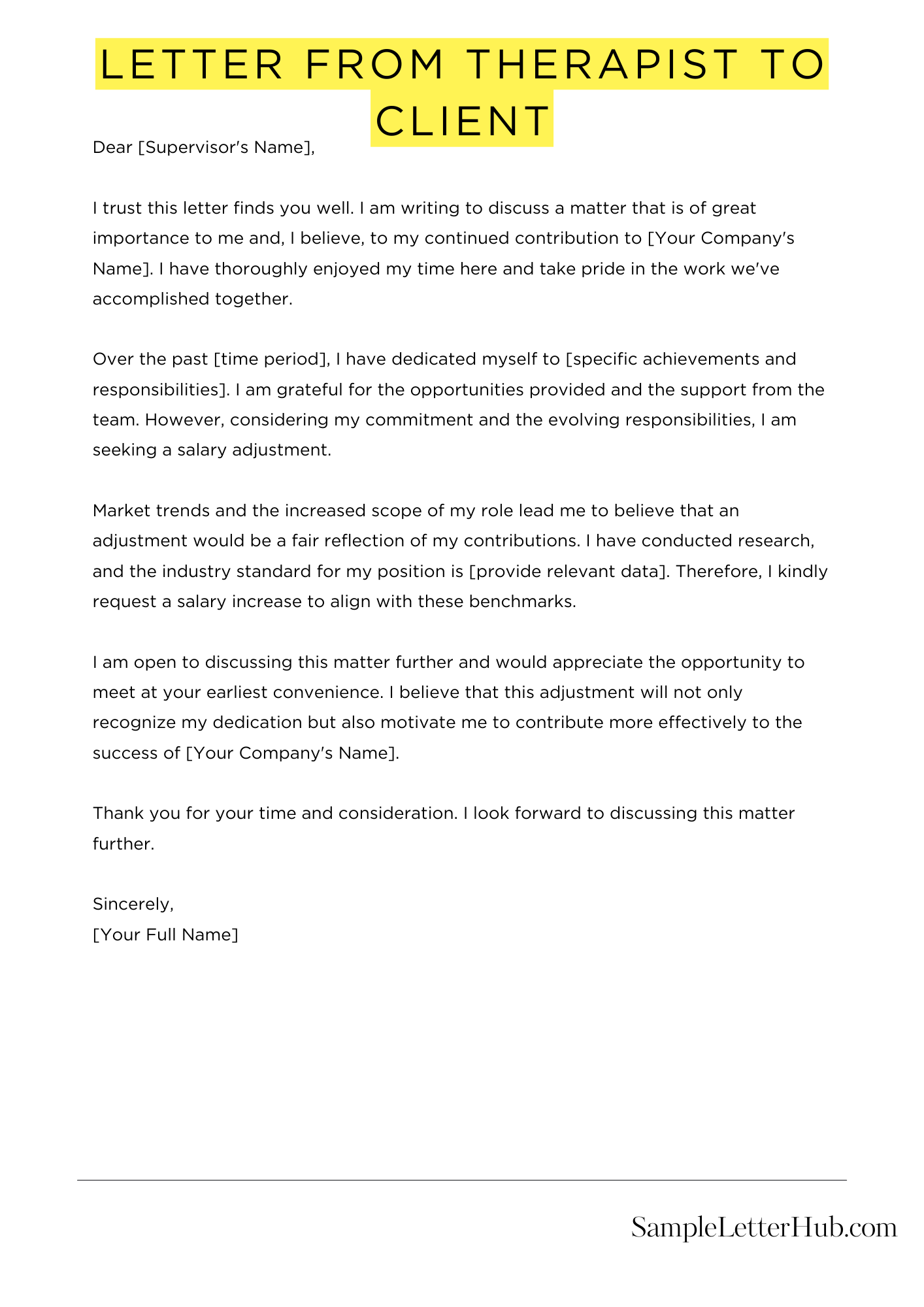Letter From Therapist To Client is a letter written by a therapist to a client. It is used to communicate important information, such as treatment plans, progress updates, or termination of services.
In this article, we will share templates, examples, and samples of Letter From Therapist To Client. These resources will help you write a clear and concise letter that meets your specific needs.
Whether you are a therapist or a client, these letters can be a valuable tool for communication and documentation.
Letter from Therapist to Client
Dear [Client Name],
I hope this letter finds you well. I am writing to follow up on our recent session and to provide you with some additional information and resources.
As we discussed, [briefly summarize the main points of the session]. I am confident that you can make progress in your goals with continued effort and support.
I have attached a handout that provides more information on [topic discussed in session]. I encourage you to review it at your convenience.
I would also like to remind you of the following resources that may be helpful to you:
* [List of resources, such as support groups, websites, or books]
Please do not hesitate to contact me if you have any questions or concerns. I am here to support you on your journey.
Sincerely,
[Therapist Name]

How to Write a Letter From Therapist to Client
Writing a letter from a therapist to a client can be a daunting task. However, by following a few simple steps, you can ensure that your letter is clear, concise, and professional.
1. Start with a Salutation
The salutation should be formal and respectful. You should use the client’s full name and title, if applicable.
2. State the Purpose of the Letter
The first paragraph of your letter should state the purpose of the letter. This could be to provide an update on the client’s progress, to schedule an appointment, or to provide information about a new treatment plan.
3. Use Clear and Concise Language
Your letter should be written in clear and concise language. Avoid using jargon or technical terms that the client may not understand.
4. Be Specific
When providing information about the client’s progress, be specific. Include details about the client’s symptoms, treatment plan, and goals.
5. Offer Support and Encouragement
Your letter should offer support and encouragement to the client. Let the client know that you are there for them and that you believe in their ability to recover.
6. End with a Call to Action
The last paragraph of your letter should include a call to action. This could be to schedule an appointment, to complete a homework assignment, or to contact you if the client has any questions.
7. Sign Your Name
Sign your name at the end of the letter. You should also include your title and contact information.
FAQs about Letter From Therapist To Client
What is the purpose of a letter from a therapist to a client?
A letter from a therapist to a client can serve various purposes, such as summarizing therapy sessions, providing feedback, setting treatment goals, or addressing specific concerns.
What should I expect to find in a letter from my therapist?
The content of a letter from a therapist can vary depending on the purpose of the letter. It may include a summary of therapy sessions, treatment recommendations, homework assignments, or reflections on the client’s progress.
How can I use a letter from my therapist in my therapy journey?
A letter from a therapist can be a valuable tool for clients. It can help them track their progress, reflect on their therapy sessions, and stay motivated in their treatment.
What should I do if I have questions about a letter from my therapist?
If you have any questions or concerns about a letter from your therapist, it is important to reach out to them for clarification. They will be able to provide you with additional information and support.
How can I ensure the confidentiality of a letter from my therapist?
Therapists are bound by ethical guidelines to maintain the confidentiality of their clients’ information. Letters from therapists are typically sent in a sealed envelope and should be kept private.

